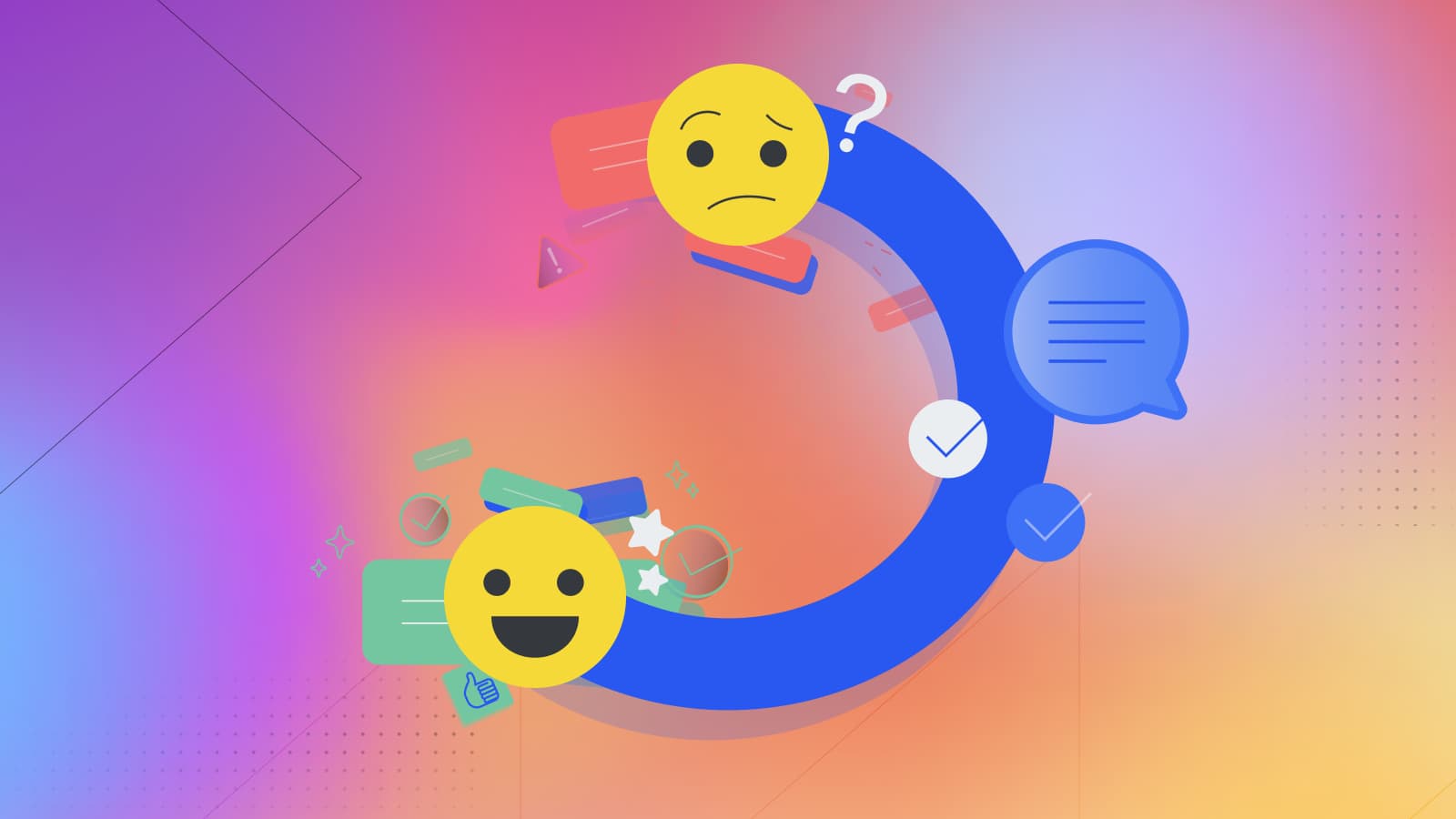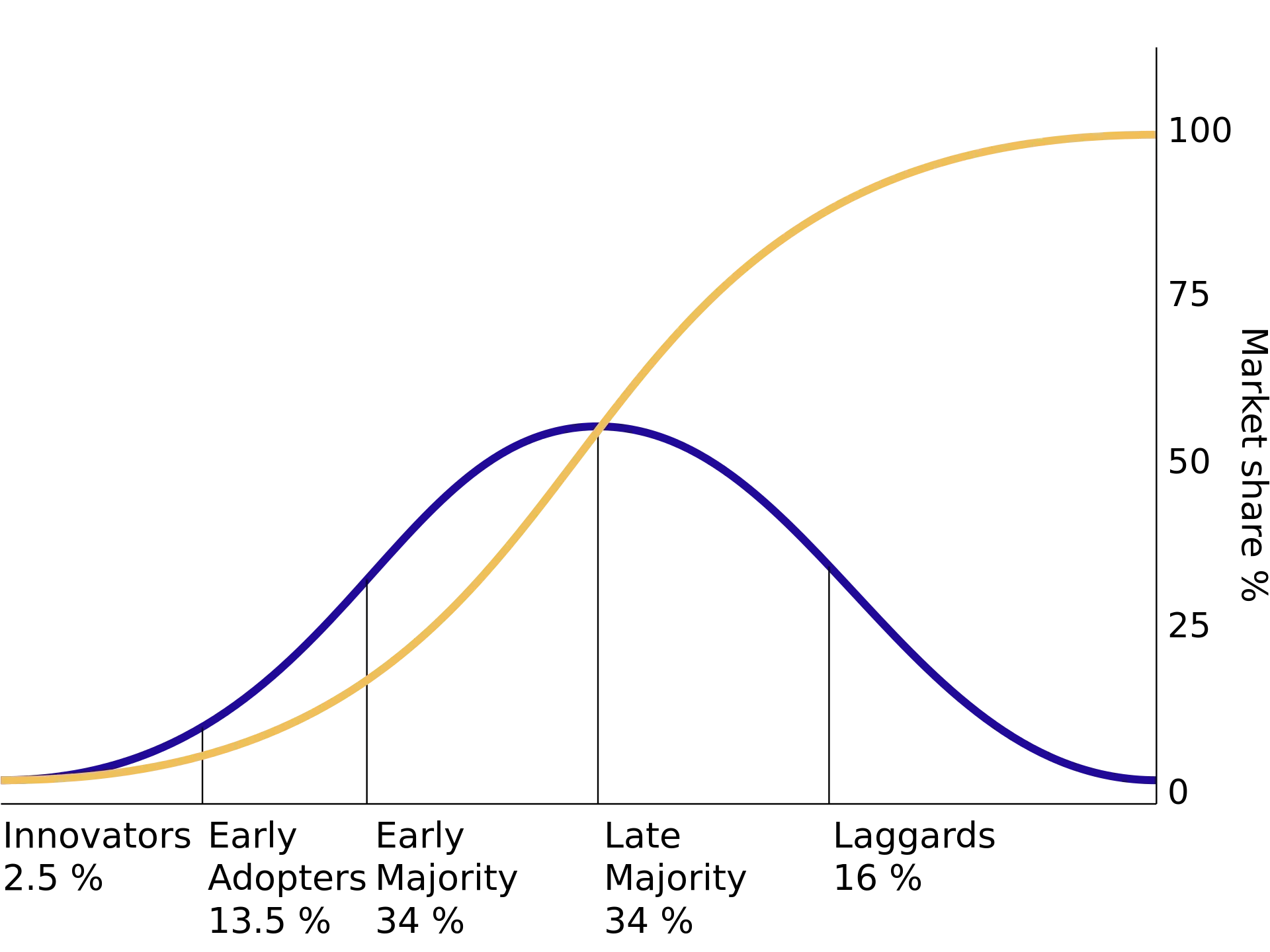From onboarding to grave: a product adoption process that makes users stick around
A framework for understanding how people become customers of products.

Many founders dream of going viral. If only network effects would take off or Taylor Swift randomly discovered our product and posted about it... then everything would be easy.
Finally, we'd have all the users we want, meaningful data and everything we need to become a unicorn, right?
No! There's an 0ld marketing saying: You can't fill a leaky bucket. The point: No matter how many inputs you generate, you won't get a lot of output if most of your input slips through the cracks.
Even if you got a million users over night—getting a 0.1% adoption rate would mean you actually only got 1000 users.
So how do you keep your bucket from leaking? That's what we'll explore in this article:
If you've read other posts on this blog, you know we love frameworks. In this post, we'll discuss a framework for understanding how people become customers of products.
Note that there are many different frameworks you could use to model this process. The simplest one is the familiar "build it, and they will come." This framework basically says: "there is nothing you can do to influence adoption; just build a product and wait for customers to appear."
It is a framework, but not a very helpful one. Instead, this post will break down a framework called the Product Adoption Process, which describes how individuals go from being totally unaware of a product or service to becoming adopters. In the context of physical products, that means buying and using the product. In the context of a digital SaaS product, it means subscribing and renewing.
Rapid product adoption can be engineered with the right techniques. @IncCEOProject https://t.co/CH10xD7PJQ
— Inc. (@Inc) April 8, 2021
Let's dive in. We'll review the five stages of product adoption, provide a definition for each one, and talk about how to move users through them with maximal speed and efficiency.
Stage 1: Awareness
If you're not aware a product exists, you can't buy it. So the first step to buying something is having it enter your consciousness.
This is where an existing brand with widespread adoption has a relative advantage over new companies -- you are already aware of well-known brands, so they have an easier time driving awareness of new products.
At the awareness stage, your job is to get in front of potential users. But it's not enough to just put your brand in front of someone: you'll need to stand out from the background noise of everything else in your audience's lives. That means creative marketing campaigns that fixate on an acute problem your audience has and positioning your product as the solution.
Customer testimonials are often used to create brand awareness and social proof during this first stage. These highlight loyal customers and their problems, which ideally helps potential customers to visualize themselves using your product too.
How to measure awareness
The key product metric to measure the success of your awareness stage is impressions. How many people have the opportunity to see your brand? Some impressions are worth more than others, of course. A Superbowl TV ad will get you a lot of impressions, but most of the audience might not fall into your relevant persona.
How to do the awareness stage better
We could write many blog posts on just this topic. It's hard to evaluate the awareness stage in isolation from the interest stage because you don't want to spend money obtaining impressions that don't do a good job of converting to interest.
Stage 2: Interest
If you've done your marketing right, you'll generate interest. Note that interest occurs when the problem your potential customers think you are solving aligns with their present desire to fix that problem. You may see an ad for an air fryer in April but not get around to being interested in an air fryer until the week before Thanksgiving.
How to measure interest
The typical way to measure interest is to measure the % of impressions that signal some kind of...interest...in your product or company. That could make them click on your ad or signup for your newsletter. These leads are typically called marketing qualified leads (MQLs) because they have done something that qualifies them as interested.
You can think of the interest stage as the introduction stage, where your users are on the way to product adoption by making their first introduction to your product.
How to do the interest stage better
Make sure you ruthlessly measure the % of impressions that generate interest, so you can double down on the channels that are working. Note that the answer to this question can change based on where you land on the production adoption curve. For example, you may find early adopters on niche blog posts, while the early majority hangs out on more mainstream channels like TV. As a result, you should tune your advertising budget to the product adoption stage.

Stage 3: Evaluation
At the evaluation stage, your potential customer has mustered the activation energy to actually investigate your product. The actual evaluation criteria they use and the value proposition they care about will depend in part on which stage of the Product Adoption Curve they fall into. For example, the innovators and early adopters will probably focus more on the potential of your tool and any innovations it brings. Once you start getting to the early majority, and especially with the late majority, you'll see a clearer focus on cost, ease of use, and differentiation from competitors.
How to measure evaluation
The line between interest and evaluation can be a bit fuzzy. The best way to think about it is that interest means someone is interested in evaluating your product at some point, while the evaluation stage means they are evaluating it right now.
A tool like Clearbit can be quite useful for assessing which of your MQLs are actively evaluating your tool. Customer queries are another clue here; if someone is hitting up your chat service, they're probably evaluating you.
How to do the evaluation stage better
For SaaS businesses, one tip for aiding your new customer in the evaluation stage of product adoption is to produce bite-sized content that helps them evaluate different aspects of your product or service. Case studies to give an overview of how other customers use your product, and case walkthroughs to explain how your product solves some specific situation.
Again, you'll want to tune this content based on the profile of the customer segment you're currently targeting. Early adopters want to be sold on the promise and newness of your product and what they can get out of getting in early. The early majority, and especially the late majority, will want to hear more about ROI and will be less convinced by novelty alone.
Stage 4: Trial
The trial stage of product adoption involves the actual evaluation of your product. For a physical product, this could be the period right after something is purchased and still within the return window. For a digital product, free trials are common (especially among those taking a product-led approach), but some products choose to go with a paid pilot alongside a money-back guarantee.
The boundary between stage 4 and stage 5 is an "aha! moment" -- the point at which a potential customer decides, "I can see myself using it."
Customer feedback from this stage is gold, and you should do whatever you can to gather feedback and heed it. There are a number of ways to do this, but one of the most effective is to leverage in-product search.
Another is to use product adoption software like Command AI to proactively ask your trial users questions. You want to make sure you do this in a non-annoying way, but when done well, it will generate an order of magnitude more feedback than traditional methods like in-app messaging.
How to measure trials
Here is an opportunity to get very granular in how you measure trials. You'll want to nail the basics with a dashboard using an analytics tool like Amplitude, Heap, or June.
How to do the trial stage better
In addition to gathering lots of precious user feedback, you'll want to make sure you have an adoption tool -- sometimes called a digital adoption platform – to help showcase your best features to your new customers.
This can be a tricky task because not all your features will be relevant to all your trial customers. You need to make sure you tune the trial to make it relevant since you can't be sure how much time the prospect will spend actually trialing your product. In a PLG world, users trial more products than ever before and need to be convinced yours is worth spending time on.
This means during user onboarding, you want to get a sharp sense of what matters to the user. Algolia does this well, for example, by asking a user what it is they're looking to do during onboarding and then customizing the rest of the onboarding flow to cater to that. Once you know what a user wants, you can tune proactive nudges to show off features, use cases, and content that are relevant.

Stage 5: Adoption
The adoption stage is the nirvana you (and your users!) seek. The time has come to move past the consideration stage and become an active user. This is when product adoption occurs (according to most people).
You'll want to have a well-defined boundary between the trial and adoption stage that allows you to measure product adoption. Usually, this means money: if a user chooses to pay for your product after a trial, they have "adopted." Of course, as we'll see later on, you haven't really "finished" the product adoption process yet. This is especially true if your product has a subscription business model, which requires you to create value through the customer's lifetime and not just upfront.
Bonus Stage 6: Love
The customer journey doesn't end with usage. There is a huge difference between using a product and loving a product. For a digital product, your goal should be to turn more users into power users who get a ton of value from your product. These are the users for whom you solve an immense problem or even multiple pain points.
There are tremendous benefits to guiding users to this last stage. If you're able to generate customer love, you'll see much better customer retention; daily active users are more likely to become long-term users than people who log in only a few times per month. You'll also generate a nice feedback loop where your raving fans will tell new prospective users about your product, bringing them to the top of the product adoption process for free.
How to measure love
There is a rich discourse on this subject. One simple way to measure love is to measure user engagement. What percent of your users are active weekly? daily?
Another common measurement is to look at the adoption rate of features. If you have an existing customer using lots of your features, they're more likely to have reached stage 6 than users using only a thin slice. (Check out this article for examples of user onboarding experiences that move the needle here.)
Who should own these metrics? Traditionally, your customer support team is charged with making existing customers who have already subscribed successful. Sometimes, a dedicated onboarding team will have the responsibility of getting new users on the path to success. In general, it's a best practice to have a clear owner for each of the product adoption stages.
The product adoption loop

We've depicted the product adoption process here as a straight line from awareness to adoption and then love. However, what makes the product adoption process so critical to understand is the fact that it normally functions as a loop rather than a straight line, especially for many products with many features and multiple use cases.
When you launch a new feature, you need to get your users to adopt the feature; otherwise, it was a waste of time (and you should consider unshipping it). Driving adoption of new features should be a company-wide initiative owned collectively by customer success, product teams, and strong customer support.
